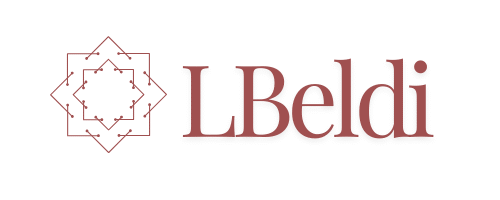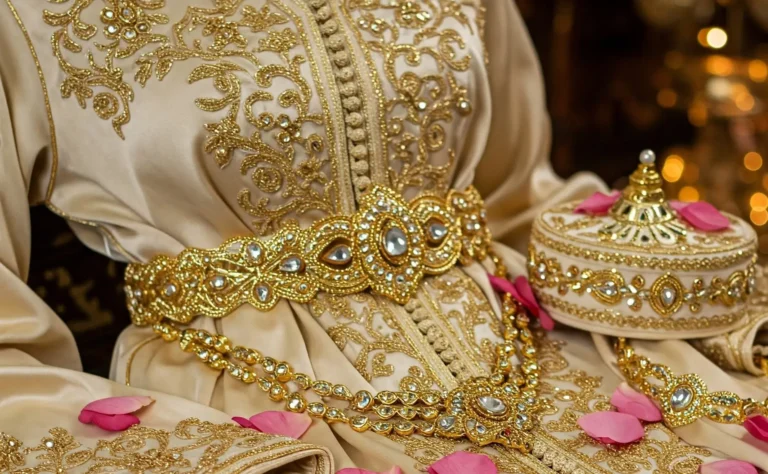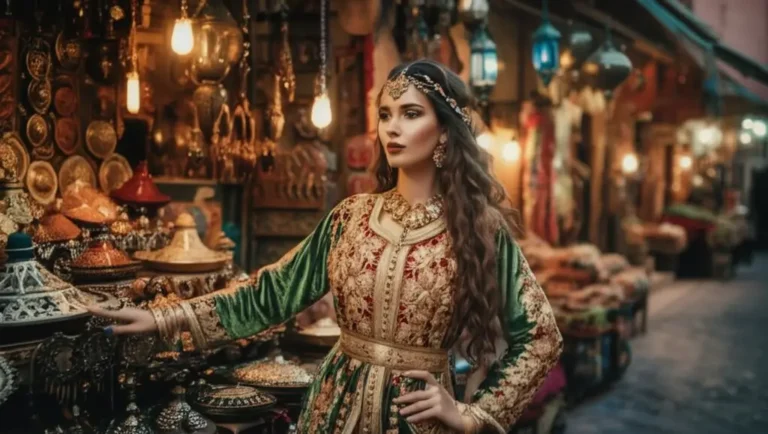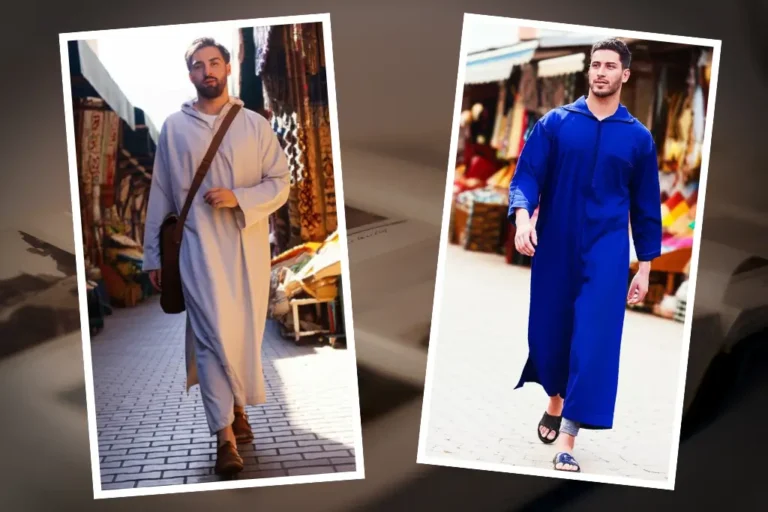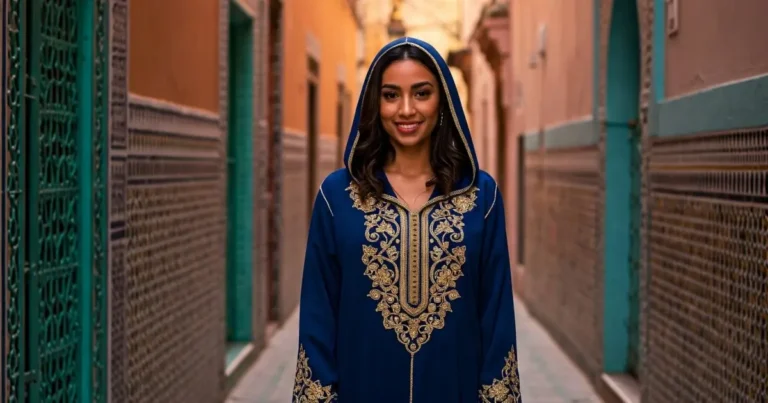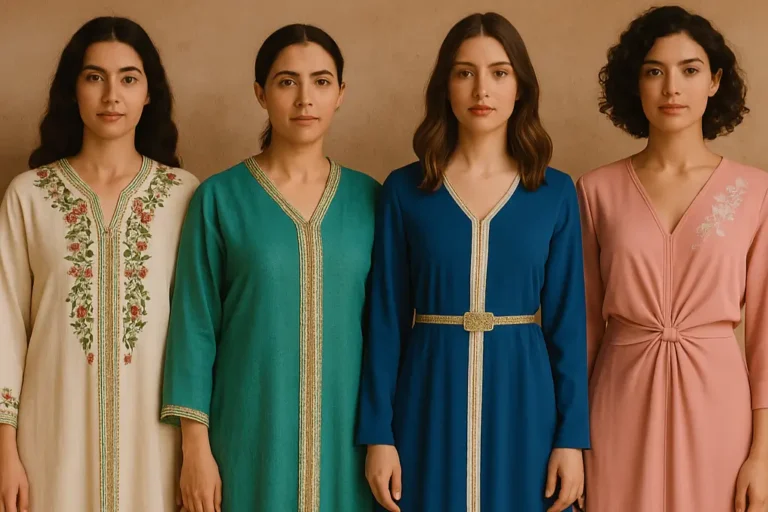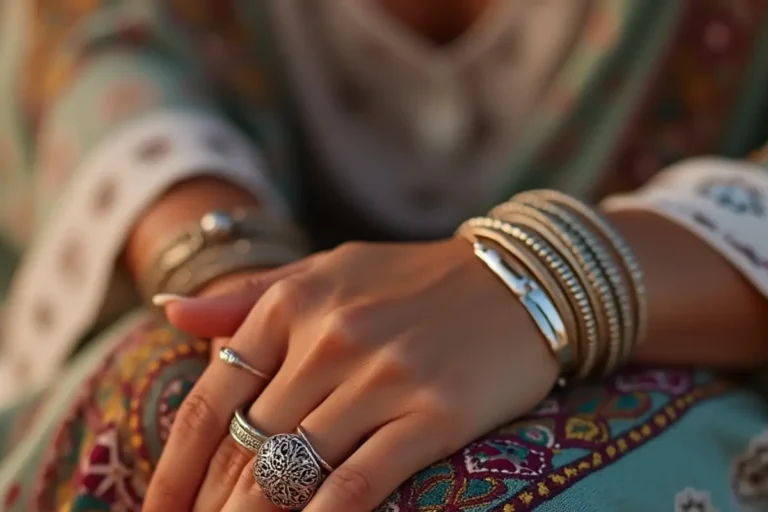Inside the World of Moroccan Belgha : Traditional Leather Slippers
Table of Contents
Introduction: More Than Just a Slipper
Imagine stepping into a bustling Moroccan souk, a kaleidoscope of colors, sounds, and aromas. Amidst the vibrant tapestry of spices, textiles, and intricate lanterns, your eyes are drawn to exquisitely crafted leather footwear. These aren’t just any shoes; they are the iconic Moroccan Belgha, traditional leather slippers that whisper tales of ancient traditions and enduring artistry. More than mere footwear, the Belgha is a cultural emblem, a tangible link to Morocco’s rich heritage, and a testament to centuries of skilled craftsmanship.
From the sun-drenched alleys of Marrakech to the bustling streets of Fez, the Moroccan Belgha has transcended its humble origins to become a global fashion statement. This guide uncovers the fascinating history, intricate craftsmanship, profound cultural significance, and modern-day allure of the authentic Moroccan Belgha. Prepare to be enchanted by a legacy stitched in leather and steeped in tradition.
The Enduring Legacy of the Moroccan Belgha: A Journey Through Time
The Ancient Roots of the Moroccan Belgha
The Moroccan Belgha’s story is deeply intertwined with North African nomadic traditions and vibrant cultures. Its origins trace back to indigenous Berber communities and Arab influences. Initially, these heelless leather slippers were practical, durable footwear suited for traversing Morocco’s diverse landscapes. Their simple yet effective design offered comfort and protection.
Over time, as trade routes flourished, the Belgha’s design and materials evolved. Influences from various dynasties subtly shaped its aesthetic. What began as utilitarian footwear gradually transformed into an item of cultural significance, reflecting the artistic sensibilities and social hierarchies of the time. The Belgha’s enduring presence through centuries speaks volumes about its timeless appeal and adaptability.
From Humble Beginnings to Royal Attire
While the Belgha was a staple for all social classes, its journey from a common slipper to a symbol of prestige is fascinating. In the opulent courts of Moroccan sultans and among the elite, the Belgha transcended its functional purpose to become a statement of luxury and status. These were meticulously crafted pieces, often adorned with intricate embroidery, precious threads, and the finest leathers, signifying the wearer’s wealth and social standing.
Imagine nobility gliding in richly decorated caftans, their feet encased in gleaming Belghas made from the softest lambskin, perhaps in regal yellow – a color often associated with royalty and prosperity. The choice of material, design complexity, and vibrant hues all played a role in denoting one’s position in society. This transformation highlights the deep cultural value placed on craftsmanship and aesthetic beauty in Moroccan society.
The Art of Crafting Moroccan Belgha: A Testament to Ancestral Know-How
The Soul of the Slipper: Materials and Craftsmanship
At the heart of every authentic Moroccan Belgha lies a profound respect for natural materials and an unwavering dedication to traditional craftsmanship. The choice of leather is paramount, dictating the slipper’s comfort, durability, and aesthetic appeal. Historically, and still predominantly today, the Belgha is crafted from high-quality leathers, each lending unique characteristics:
•Goat Leather: Supple and fine-grained, often used for delicate and flexible Belghas.
•Sheepskin: Exceptionally soft and lightweight, providing unparalleled comfort, popular for indoor slippers.
•Camel Leather: Robust and durable, ideal for outdoor wear and longevity.
Before transformation, leathers undergo a meticulous tanning process, often in traditional tanneries like those in Fez. This ancient method uses natural ingredients and plant-based dyes, resulting in pliable, breathable leather with a unique character. Natural dyes from saffron, poppy, indigo, and henna create the rich, earthy, and vibrant color palette.
The creation of a handmade Moroccan Belgha is a collaborative symphony of specialized skills, performed by master craftsmen known as maâlems. Each maâlem is a custodian of ancestral knowledge, perfecting their specific role:
•The Cherraz (Leather Cutter): Selects hides and precisely cuts leather pieces for the upper and sole.
•The Assarrame (Decorator): Responsible for intricate embellishments, bringing the Belgha to life with culturally significant patterns.
•The Chrabli (Shoemaker): Meticulously stitches together leather pieces and attaches them to the sturdy sole, ensuring durability and perfect form.
The Making of a Masterpiece: From Leather to Belgha
The process of crafting a handmade Moroccan Belgha is a captivating blend of tradition and artistry. Each pair is imbued with the spirit of its maker. Here’s a simplified journey:
1.Pattern Cutting: The cherraz carefully lays out patterns on selected leather, ensuring minimal waste.
2.Tanning and Dyeing: Leather pieces are naturally tanned and dyed, giving them characteristic colors and suppleness.
3.Shaping the Upper: Leather is often soaked and stretched over a wooden last to give it its distinctive shape, including the upturned toe.
4.Embellishment: The assarrame hand-stitches intricate designs or applies decorative elements.
5.Sole Attachment: The upper is carefully stitched to the thick leather sole by the chrabli, ensuring longevity.
6.Finishing Touches: The Belgha undergoes polishing, shaping, and quality checks.
This meticulous process results in a product that is not only beautiful but also incredibly durable and comfortable. Regional variations are fascinating:
•Fez: Known for elegant, often pointed-toe Belghas with intricate embroidery.
•Marrakech: Offers a wider variety, from simple designs to flamboyant, colorful options, often featuring bold patterns and soft sheepskin.
•Middle Atlas: Features more rustic designs, often from goat leather, focusing on durability and practicality, sometimes with a small heel or rounder toe.
Each region and maâlem leaves an indelible mark, making every pair a unique piece of Moroccan artistry.
Beyond Footwear: The Cultural Significance of the Moroccan Belgha
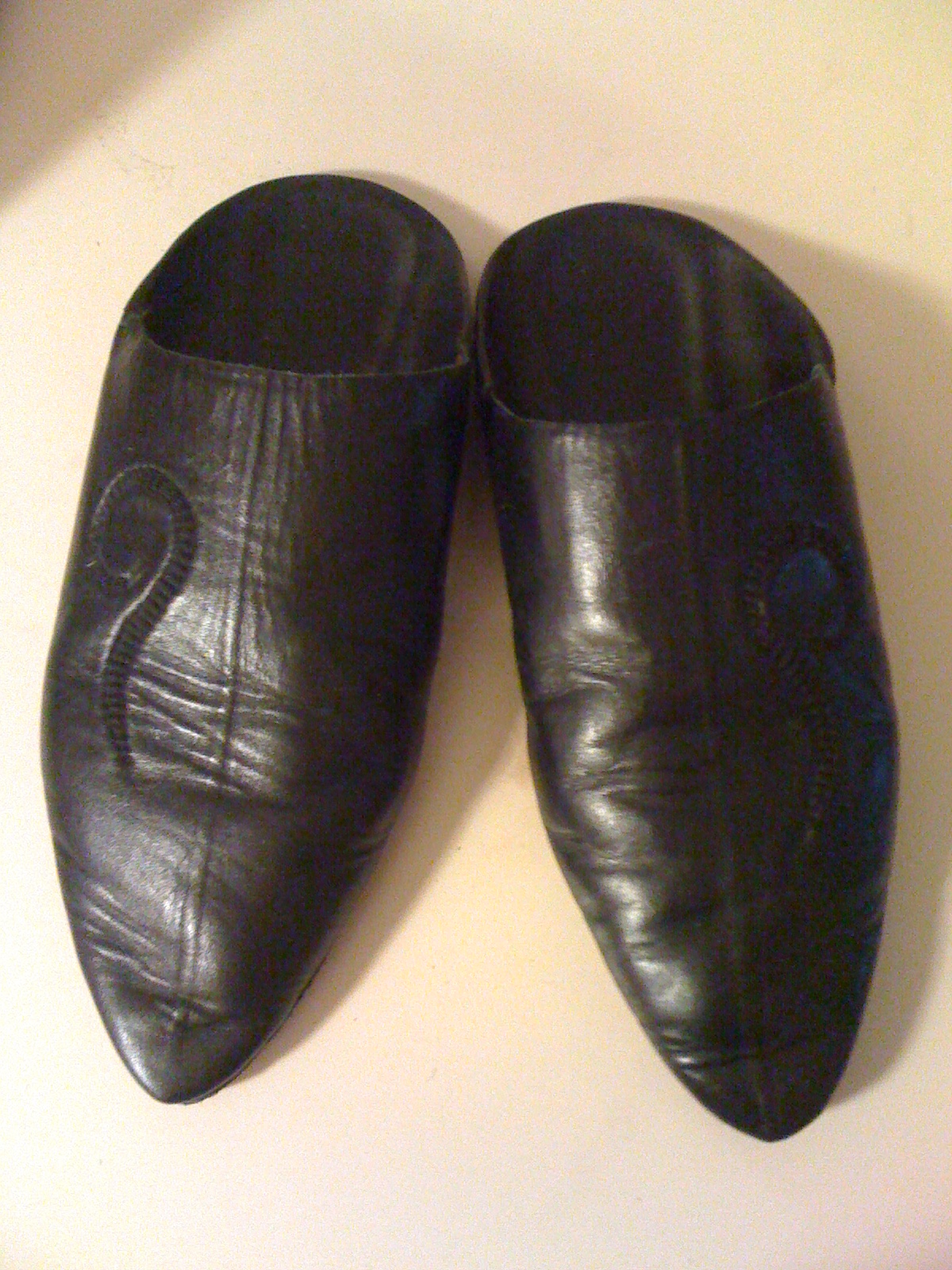
By Saltassine – Own work, CC BY-SA 4.0, Link
A Symbol of Moroccan Identity and Tradition
The Moroccan Belgha is far more than just a shoe; it is a profound symbol woven into the very fabric of Moroccan identity and tradition. It embodies the country’s rich history, vibrant culture, and enduring spirit. While comfortable for everyday wear, the Belgha truly shines during special occasions, becoming an integral part of celebrations and rituals:
•Weddings: The Belgha plays a significant role, symbolizing tradition and grace. Brides and grooms often wear beautifully crafted Belghas.
•Religious Festivals: During holidays like Eid, families dress in their finest traditional clothing, and the Belgha is an indispensable accessory, signifying respect and joy.
•Family Gatherings and Community Events: Its ease of wear and cultural resonance make it a preferred choice, fostering a sense of belonging and continuity.
The Language of the Belgha: Colors and Symbolism
Just as a painter uses colors to convey emotion, the colors and patterns of the Moroccan Belgha often carry deeper meanings. Traditional colors hold specific symbolism:
•Yellow: Iconic, associated with royalty, nobility, and prosperity.
•White: Symbolizes purity, peace, and spirituality, frequently worn during religious ceremonies or by brides.
•Red: Vibrant, representing passion, courage, and vitality.
•Black: Versatile and practical, can signify formality or sophistication.
•Green: Associated with Islam, nature, and good fortune.
Beyond colors, intricate patterns and motifs (geometric, floral, calligraphic) draw inspiration from Islamic art, Berber traditions, and the natural world, each carrying its own cultural significance.
Moroccan Belgha in the Modern World: From Souks to Catwalks
The Global Appeal of a Timeless Classic
In an increasingly globalized world, the Moroccan Belgha stands as a remarkable example of enduring style and cultural resonance. What was once exclusively a traditional Moroccan shoe has now captivated the international fashion scene, becoming a coveted item for fashionistas and conscious consumers. Its distinctive silhouette, rich cultural narrative, and the undeniable allure of artisanal craftsmanship have propelled it onto a global stage.
High-fashion designers have paid homage to the traditional Moroccan slipper, incorporating its essence into their designs. This global recognition highlights the Belgha’s powerful aesthetic and cultural impact, underscoring its transition from a regional staple to a universally admired fashion accessory.
This global embrace has also spurred an exciting evolution in Belgha styles. While traditional forms remain revered, designers and artisans constantly experiment with new materials, embellishments, and silhouettes to align with contemporary trends. This adaptability ensures the Belgha’s continued relevance, proving that tradition and modernity can indeed dance hand-in-hand.
The Enduring Charm of Authenticity
Amidst the rapid pace of fast fashion, the handmade Moroccan Belgha offers a refreshing counter-narrative. Its enduring appeal lies precisely in its authenticity and the human touch embedded in every stitch. Consumers increasingly seek products with a story, items that reflect ethical production and sustainable practices. The Belgha, often made from naturally tanned leather and crafted by skilled artisans who earn a fair wage, fits perfectly into this growing demand for conscious consumption.
Preserving the traditional craftsmanship of the Belgha is not just about maintaining an art form; it’s about safeguarding a cultural legacy. Each purchase of an authentic, handmade Moroccan Belgha supports the livelihoods of maâlems and their communities, ensuring these invaluable skills are passed down to future generations. It’s a small act with a significant impact, contributing to the economic well-being of Moroccan artisans and helping to keep a vibrant cultural tradition alive.
A Guide to Choosing and Caring for Your Moroccan Belgha
TIPS: Finding Your Perfect Pair
Acquiring an authentic handmade Moroccan Belgha is an experience in itself. To ensure you find a pair that truly embodies the spirit of Moroccan craftsmanship, consider these tips:
•Authenticity is Key: Look for genuine leather (distinct scent, natural finish). Be wary of overly uniform or synthetic materials. Stitching should be robust and even.
•Feel the Craftsmanship: Flex the sole; it should be sturdy yet flexible. The interior should feel smooth and comfortable.
•Size and Fit: Belghas mold to your foot. They often fit snugly at first and stretch slightly. Consult size guides for online purchases.
Where to Buy Authentic Moroccan Belgha
•Souks in Morocco: Immersive experience in cities like Fez, Marrakech, and Meknes. Allows you to see the process and haggle.
•Reputable Online Stores: Many artisans sell authentic Moroccan Belgha online. Look for detailed product descriptions, clear images, and information on sourcing and ethical practices.
Caring for Your Leather Treasures
To ensure your Moroccan leather slippers remain beautiful and comfortable, proper care is essential:
•Cleaning: Gently wipe with a soft, damp cloth. For stubborn marks, use a specialized leather cleaner sparingly. Avoid harsh chemicals.
•Conditioning: Periodically apply a good quality leather conditioner to keep the material supple and prevent drying.
•Drying: If wet, air dry naturally at room temperature, away from direct sunlight or heat. Stuff with newspaper to absorb moisture and maintain shape.
•Storage: Store in a cool, dry place, away from direct sunlight. Use shoe trees or tissue paper to retain shape. Place in a breathable cloth bag for extended storage.
By following these simple care tips, your handmade Moroccan Belgha will continue to be a source of comfort and a beautiful reminder of Moroccan heritage.
Frequently Asked Questions (FAQ)
What is the difference between Moroccan Belgha and Babouches?
The terms “Belgha” and “Babouches” are often used interchangeably. However, “Belgha” specifically refers to the traditional heelless leather slipper, often with a pointed or rounded toe, worn by both men and women. “Babouche” is a broader term for a soft, heelless slipper. While all Belghas are a type of babouche, not all babouches are Belghas. The Belgha is a distinct style characterized by its specific construction and cultural significance.
Are Moroccan Belghas comfortable for everyday wear?
Absolutely! Moroccan Belghas are renowned for their comfort. Made from soft, breathable leather, they mold to your foot over time. They are designed for ease of wear, ideal for lounging, errands, or as stylish indoor slippers. For outdoor use, choose Belghas made from more durable leathers like camel leather.
How can I tell if a Moroccan Belgha is handmade?
Handmade Moroccan Belghas often exhibit subtle imperfections. Look for variations in stitching, slight irregularities in the leather, and the distinct scent of natural leather. The sole is typically made from multiple layers of leather, hand-stitched to the upper. Purchasing from reputable artisans or ethical online retailers is the best way to ensure authenticity.
What is the best way to break in a new pair of Moroccan Belghas?
New leather Belghas might feel snug. Wear them around the house for short periods, gradually increasing duration. Your foot’s warmth will help the leather soften and mold. If tight, wear with thin socks initially. Avoid getting them wet during this period.
Can I wear Moroccan Belghas outside?
Yes, many styles are suitable for outdoor wear, especially those with thicker, more durable leather soles. They are perfect for casual outings. However, they are not designed for strenuous activities or very wet conditions. For optimal longevity, reserve them for dry weather and relatively smooth surfaces. Consider a pair with a reinforced sole for frequent outdoor use.
Conclusion: A Timeless Legacy, A Promising Future
The Moroccan Belgha is more than just a traditional leather slipper; it is a living narrative, a tangible piece of Moroccan history, and a vibrant symbol of its enduring culture. From its ancient roots as practical footwear to its global recognition, the Belgha has journeyed through time, adapting and evolving while retaining its authentic soul.
Its creation is a testament to ancestral know-how, a meticulous dance performed by maâlems whose hands imbue each pair with artistry and tradition. The Belgha’s cultural significance extends far beyond its aesthetic appeal, serving as a powerful emblem of identity during life’s most cherished moments. In a world increasingly valuing authenticity and sustainability, the handmade Moroccan Belgha stands as a beacon, offering a conscious choice that supports artisans and preserves a rich heritage.
As you slip your feet into a pair of authentic Moroccan Belgha, you’re not just wearing shoes; you’re embracing a story, connecting with a legacy, and becoming a part of a tradition that continues to thrive.
Did you find this article helpful?
Rate it now and help us deliver better content:
There are no reviews yet. Be the first to share your feedback!
